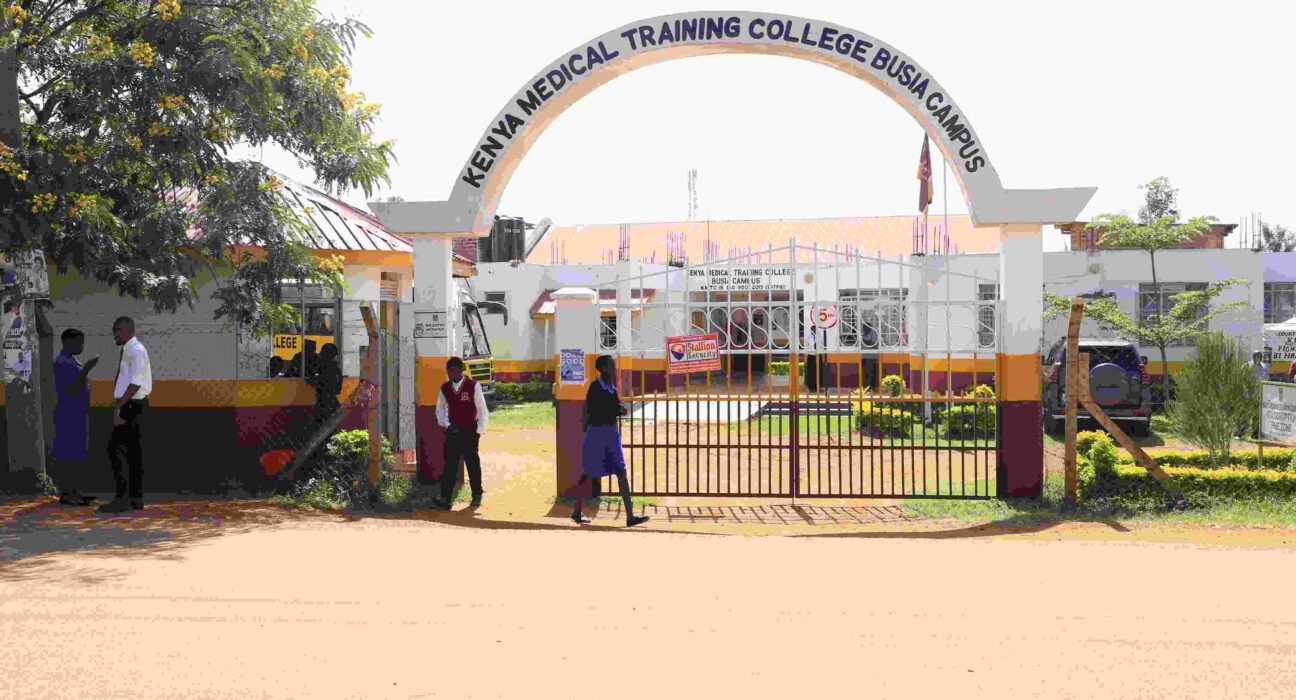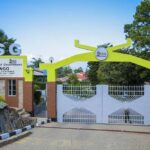The Kenya Medical Training College (KMTC) is a renowned institution that has been shaping the future of healthcare in Kenya for decades. Among its diverse medical courses, the Diploma in Radiography and Imaging stands out as one of the most popular and marketable programs in the country. This diploma equips students with the expertise to operate medical imaging equipment, interpret diagnostic images, and contribute to patient care in various healthcare settings.
In this article, we will discuss the KMTC Diploma in Radiography in detail, covering everything prospective students need to know—from the admission requirements to the fee structure and career opportunities that await upon graduation.
Table of Contents
- Overview of the Diploma in Radiography at KMTC
- Admission Requirements for the KMTC Radiography Course
- Duration and Curriculum of the Radiography Program
- KMTC Fee Structure for Self-Sponsored Students
- Step-by-Step Guide on How to Apply for KMTC Radiography Diploma
- Career Prospects After Completing the Radiography Course
- Contact Information for KMTC
1. Overview of the Diploma in Radiography at KMTC
The Diploma in Radiography & Imaging at KMTC is designed to provide students with comprehensive knowledge and hands-on experience in medical imaging. Radiographers play an essential role in modern healthcare, using advanced technology such as X-rays, MRI scanners, and CT scanners to capture detailed images of the human body. These images are then used by doctors and specialists to diagnose a variety of medical conditions.
KMTC is a key player in shaping skilled healthcare professionals, and its radiography program is designed to equip students with the skills needed to excel in the field of diagnostic imaging. The Diploma in Radiography is a highly regarded course, offering an in-depth understanding of imaging techniques, radiation safety, patient care, and the latest advancements in medical imaging technology.
The program is structured as a three-year course, which combines both theoretical learning and practical training. Students are provided with exposure to the latest imaging technologies and are trained in clinical settings, ensuring that they are well-prepared for the workforce after graduation.
2. Admission Requirements for the KMTC Radiography Course
Admission to the Diploma in Radiography & Imaging at KMTC is competitive, and applicants must meet certain criteria. Below are the minimum qualifications required for entry into this program:
- Minimum Mean Grade: A grade of C in the Kenya Certificate of Secondary Education (KCSE) or its equivalent.
- English or Kiswahili: Applicants must have a grade of C or higher in English or Kiswahili.
- Physics/Physical Sciences: A grade of C or better is required.
- Biology/Biological Sciences: A grade of C or above is necessary.
- Additional Requirements: Applicants must also have at least C- in one of the following subjects: Mathematics, Chemistry.
These entry requirements are designed to ensure that students have a strong academic foundation in the sciences, which is essential for success in the field of radiography. Students who meet these qualifications can proceed with the application process.
3. Duration and Curriculum of the Radiography Program
The KMTC Diploma in Radiography & Imaging is a three-year program, which is divided into six semesters. The curriculum is designed to equip students with both theoretical knowledge and practical skills. Below is an outline of what students can expect during the course:
Year 1: Introduction to Radiography and Medical Imaging
The first year of the program lays the groundwork for the students’ knowledge in the basics of medical imaging and healthcare. Key subjects covered include:
- Introduction to Radiography: Students are introduced to the fundamentals of radiography, its importance in healthcare, and the various imaging techniques.
- Anatomy and Physiology: Understanding the human body and how it relates to medical imaging.
- Radiation Protection: Students learn the importance of safety when handling radiation in medical imaging.
- Basic Radiographic Techniques: Students are introduced to standard imaging practices and equipment.
Year 2: Advanced Imaging Techniques and Patient Management
In the second year, students build upon their foundational knowledge and begin focusing on advanced imaging techniques. Key topics include:
- X-ray Imaging: Learning how to operate X-ray machines and perform imaging procedures.
- Computed Tomography (CT) and MRI: Gaining skills in the use of CT and MRI machines, which are essential in modern diagnostic imaging.
- Patient Care: Students learn how to interact with patients, ensuring that they are comfortable and informed throughout the imaging process.
- Ethics and Professionalism: Students are taught the ethical standards and professionalism required in medical imaging.
Year 3: Clinical Training and Specialized Imaging Techniques
In the third and final year, the focus is on clinical training and more specialized imaging techniques. Students will participate in clinical attachments where they apply their skills in real-life medical settings. Key subjects in the third year include:
- Clinical Practice: Hands-on experience in healthcare facilities, using imaging equipment under supervision.
- Specialized Imaging Techniques: Learning advanced imaging methods such as fluoroscopy, ultrasound, and mammography.
- Image Interpretation: Developing skills in analyzing radiographic images for accurate diagnosis.
By the end of the three years, students are well-equipped to perform diagnostic imaging procedures and interpret the results with accuracy.
4. KMTC Fee Structure for Self-Sponsored Students
The KMTC Diploma in Radiography & Imaging is a self-sponsored course, and students are required to pay fees as outlined in the official fee structure. Below is the breakdown of the Year 1 fee structure for self-sponsored students:
| Item | Amount (KSH) |
|---|---|
| Registration Fee | 2,000 |
| Activity Fee | 7,000 |
| Examination Fee | 10,000 |
| Library & ICT Services Fee | 3,000 |
| Tuition Fee | 70,000 |
| Research & Development Fee | 10,000 |
| Transport Levy | 9,000 |
| Maintenance Levy | 9,000 |
| Student Identity Card | 700 |
| Total | 120,700 |
Installment Payment Option
Students are encouraged to pay the full academic year’s fees upfront. However, there is also an installment payment option available:
- First Installment (Ksh 63,200): Payable before or during registration.
- Second Installment (Ksh 57,500): Payable at the beginning of the second semester.
This payment structure is designed to give students some flexibility in managing their finances while pursuing their studies.
5. Step-by-Step Guide on How to Apply for KMTC Radiography Diploma
To apply for the Diploma in Radiography & Imaging at KMTC, follow these simple steps:
- Visit the KMTC Admissions Portal: Go to the official KMTC website to access the admissions portal.
- Complete the Online Application: Fill out the application form with accurate personal details and academic qualifications.
- Pay the Application Fee: Make the required application fee payment as per the instructions on the website.
- Submit Your Application: Once you’ve filled out the form and made the payment, submit your application for review.
- Wait for Admission Results: After the review, you will be notified of your admission status.
For further inquiries, you can reach out to KMTC directly using the contact details provided below.
6. Career Prospects After Completing the Radiography Course
Graduating with a Diploma in Radiography opens up a wide range of career opportunities in the healthcare sector. Radiographers are in high demand in various fields of healthcare, and their expertise is needed in hospitals, diagnostic imaging centers, and other medical institutions.
Career opportunities for graduates include:
- Radiographer: Working in hospitals or diagnostic imaging centers to perform medical imaging procedures.
- MRI Technologist: Specializing in operating MRI machines for advanced imaging.
- CT Technologist: Operating CT scanners to capture detailed images of internal body structures.
- Medical Equipment Technician: Maintaining and repairing radiographic equipment in hospitals or clinics.
- Teaching and Research: With additional training or education, radiographers can transition into teaching or research roles in academic institutions or medical research centers.
7. Contact Information for KMTC
For any inquiries or more information about the Diploma in Radiography & Imaging, you can contact KMTC through the following channels:
- Phone: 020-2725711 / 0770999657 / 0737-352543 / 0706-541869
- Email: admissions@kmtc.ac.ke
The KMTC Diploma in Radiography & Imaging offers students an excellent opportunity to pursue a career in a growing and dynamic field. With strong demand for skilled radiographers in Kenya and abroad, this diploma opens up numerous career paths in healthcare. The program’s well-rounded curriculum, coupled with practical training, ensures that graduates are well-equipped to make meaningful contributions to the healthcare industry.
For prospective students, understanding the admission requirements, fee structure, and career opportunities associated with the program is essential for making an informed decision. KMTC continues to be a top choice for those looking to advance in the medical field and secure a bright future in radiography.





